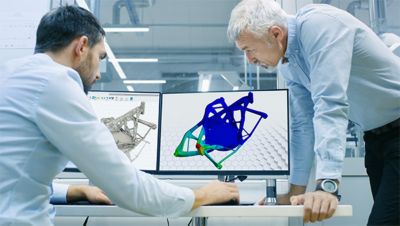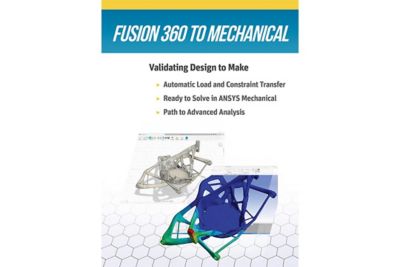-
-
Access Free Student Software
Ansys empowers the next generation of engineers
Students get free access to world-class simulation software.
-
Connect with Ansys Now!
Design your future
Connect with Ansys to explore how simulation can power your next breakthrough.
Countries & Regions
Free Trials
Products & Services
Learn
About
Back
Products & Services
Back
Learn
Ansys empowers the next generation of engineers
Students get free access to world-class simulation software.
Back
About
Design your future
Connect with Ansys to explore how simulation can power your next breakthrough.
Free Trials
ANSYS BLOG
November 19, 2019
Ansys and Autodesk Develop an Open and Seamless Workflow
Legacy workflows, tools and operations can hinder product development. Designers and analysts might need the latest applications, but if they don’t fit in with current processes then implementation costs could outweigh benefits.
This is why many computer-aided design (CAD), computer-aided manufacturing (CAM) and computer-aided engineering (CAE) providers are collaborating to create interconnected ecosystems.
Product developers need the latest tools to succeed. But if they don’t integrate properly, implementing new tools can be cumbersome. As a result, third-party CAD, CAM and CAE providers are integrating their tools and platforms.
By enabling integrations between third-party software, providers realize that they can offer customers better user experiences, simplified workflows and upgraded toolsets.
Customers need to be able to make the right technology choices for their own systems, which is why Ansys believes in an open ecosystem between CAD, CAM and CAE providers.
In that spirit, Ansys and Autodesk have announced a partnership to break down the silos between designers and analysts. The organizations aim to automate model transfer between Autodesk Fusion 360 and Ansys Mechanical. This automated transfer will maintain all of the data needed to complete design, manufacturing and simulation tasks.
Model Will Update Automatically When Working with Fusion 360 and Mechanical
Fusion 360 is a cloud-based, CAD, CAM and collaboration platform. It gives designers a single environment to digitally and physically develop the model.
The partnership aims to create a workflow where Fusion 360 models are automatically available in Mechanical. The simulation properties (such as boundary conditions, loading conditions and mesh size) will persist through the transfer — along with CAD and CAM data.
The idea is to replace manual file sharing between designers (who develop CAD models) and analysts (who use simulations to assess designs). This automation will help reduce product development cycles.
Designers and analysts will experience an improved workflow between Autodesk Fusion 360 and ANSYS Mechanical.
The organizations are also improving automotive workflows. It involves the integration of the automotive 3D visualization and prototyping tool, Autodesk’s VRED, with the optical simulation technologies offered by Ansys. As a result, automotive designers will be able to visualize, optimize and review interior and exterior designs with a high level of accuracy.
To learn more about this partnership and its goals, read the press release: Autodesk and Ansys Drive Seamless Engineering Workflow Interoperability to Speed New Product Innovation.

